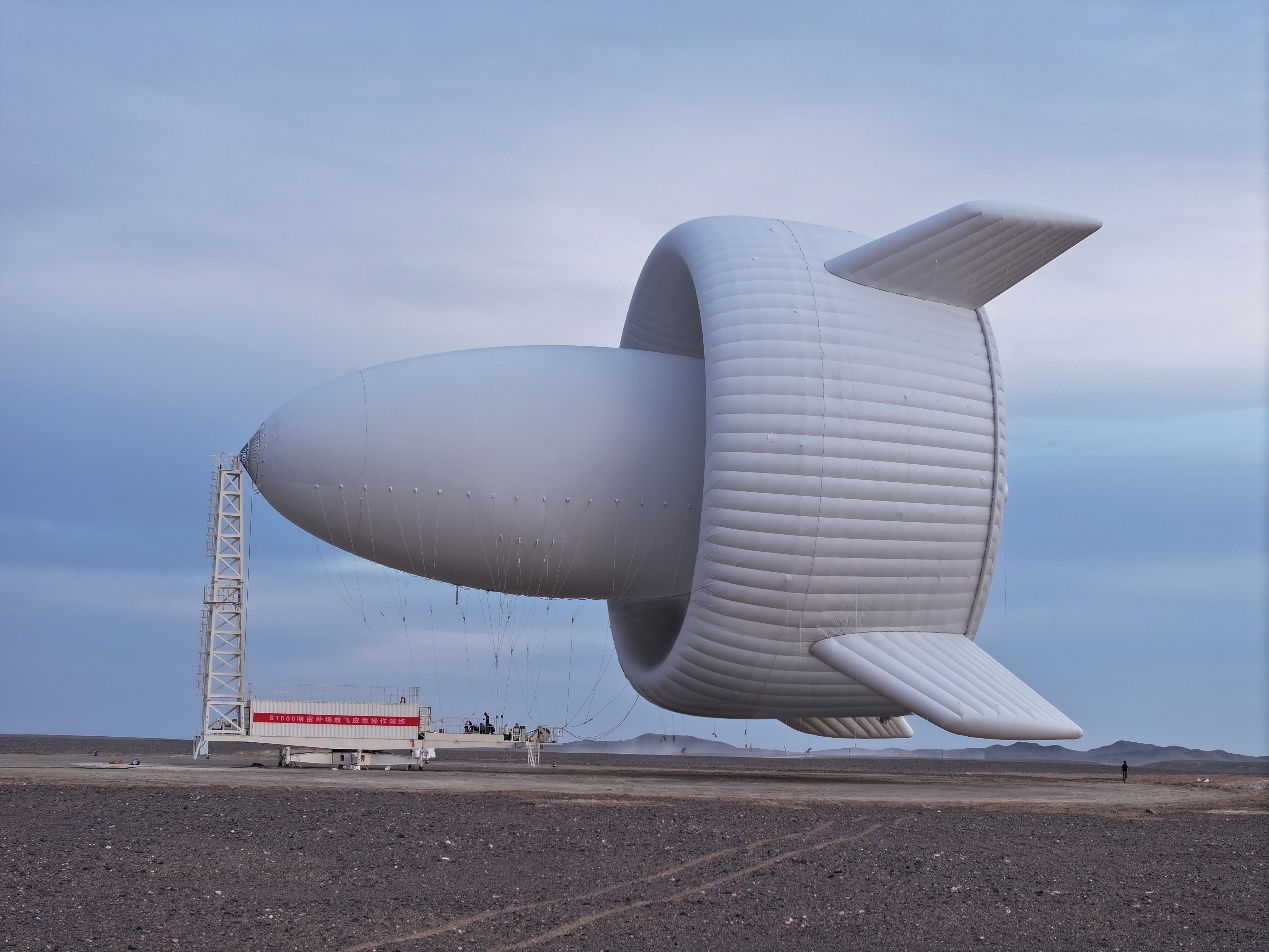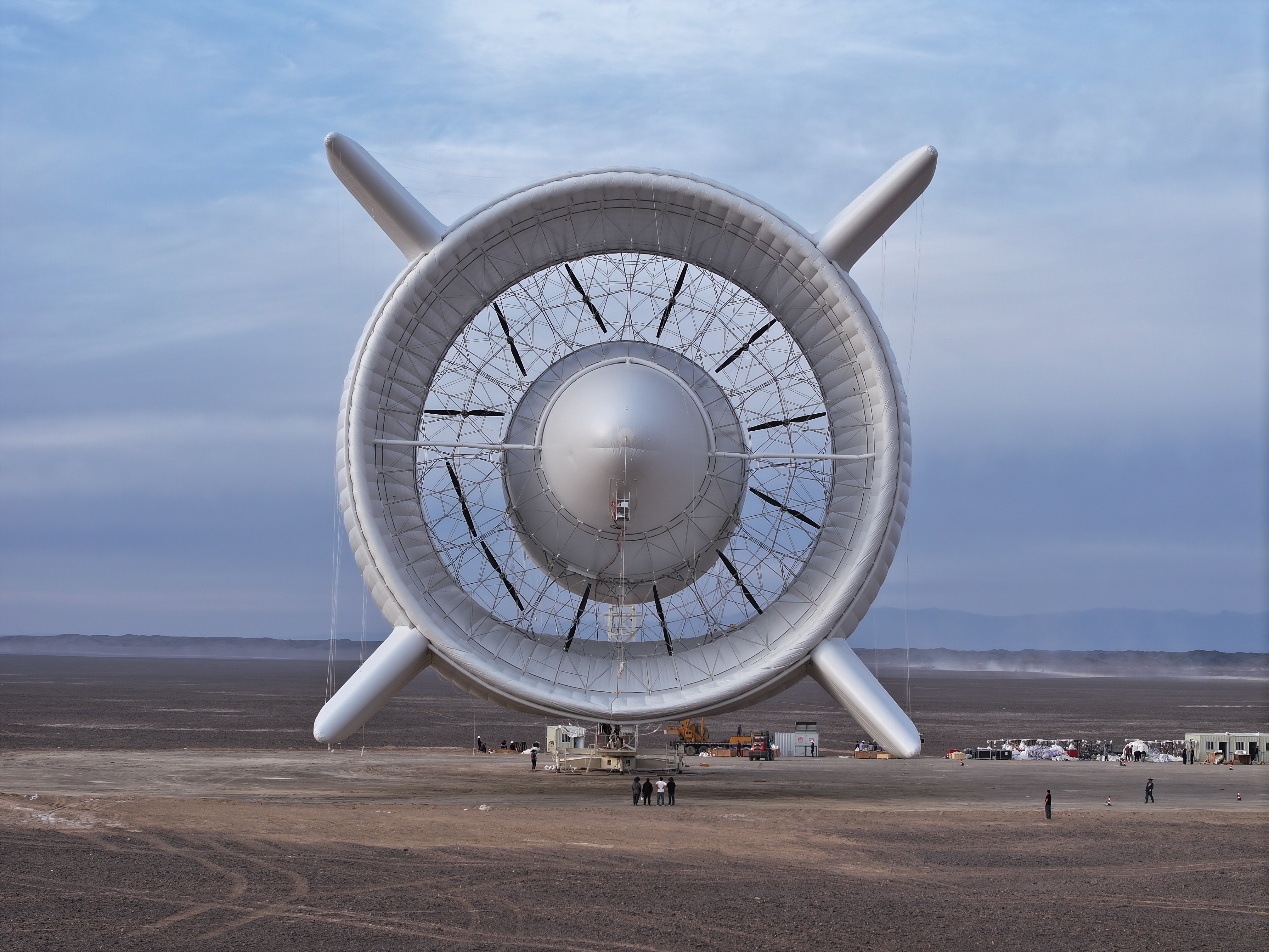From September 19 to 21, 2025, the world’s first megawatt-class high-altitude wind power system—the S1500 floating airborne wind energy system (SAWES)—jointly developed by the Department of Electrical Engineering and Applied Electronics (EEA) of Tsinghua University, Linyi Yunchuan, and the Aerospace Research Institute of the Chinese Academy of Sciences, successfully completed its maiden flight at the Naomao Lake base in Hami, Xinjiang. The test flight focused on evaluating the performance of the floating platform, including full assembly, shape retention pressure testing, and strong wind deployment and retrieval under day and night conditions, laying a solid foundation for subsequent comprehensive testing and airborne power generation operations.

The successfully flown S1500 system is currently the largest and highest-power floating high-altitude wind power device in the world. The system measures 60 meters in length, 40 meters in width, and 40 meters in height, with overall dimensions exceeding those of a standard basketball court. Its main gasbag and ring-wing structure together form a unique giant ducted aerodynamic shape, which not only improves flight stability but also significantly enhances wind energy capture efficiency. The system is equipped with 12 interconnected 100-kilowatt wind turbine units, giving a total designed rated power exceeding 1 megawatt, and safely transmits electricity to the ground grid via high-strength, lightweight tether cables.

The Tsinghua EEA team, led by Professor Lu Chao and including faculty members Wang Shanming, Yuan Zhichang, Liu Di, and Liu Wenmao, was primarily responsible for the electrical design and core technology development of the S1500 megawatt-class system. Building on prior work supporting S500 and S1000 systems at kilometer-level altitudes with hundred-kilowatt-class power output, the team tackled key technologies including high power-density generator design, lightweight power conversion architecture and topology innovations, transmission stability analysis, and air-ground coordinated control. The successful maiden flight of the S1500 floating high-altitude wind power system not only represents a major breakthrough in the field of high-altitude wind energy but also establishes critical technical foundations for future larger-scale and longer-duration high-altitude wind power experiments and demonstration applications.

















 News & Events
News & Events